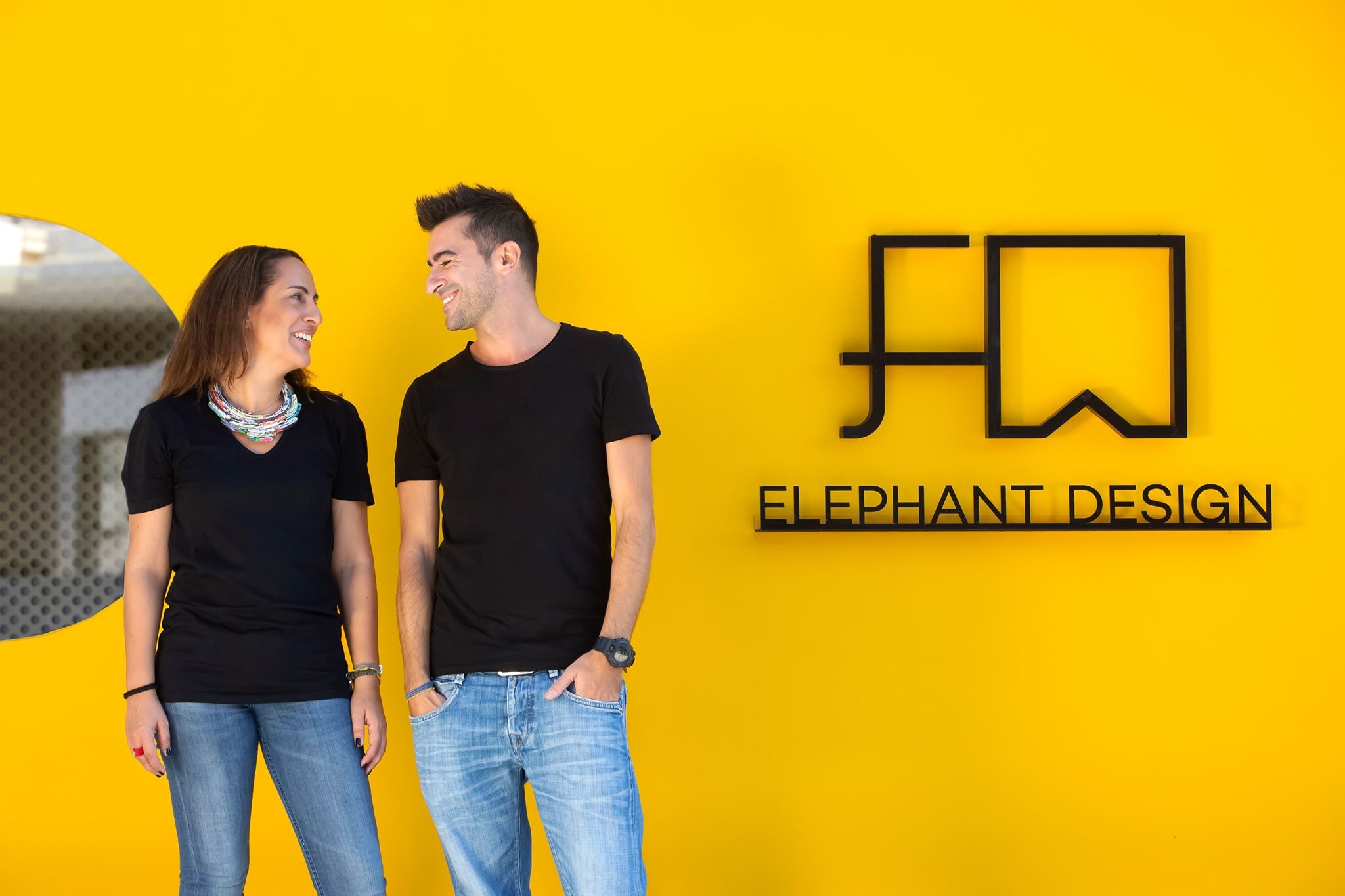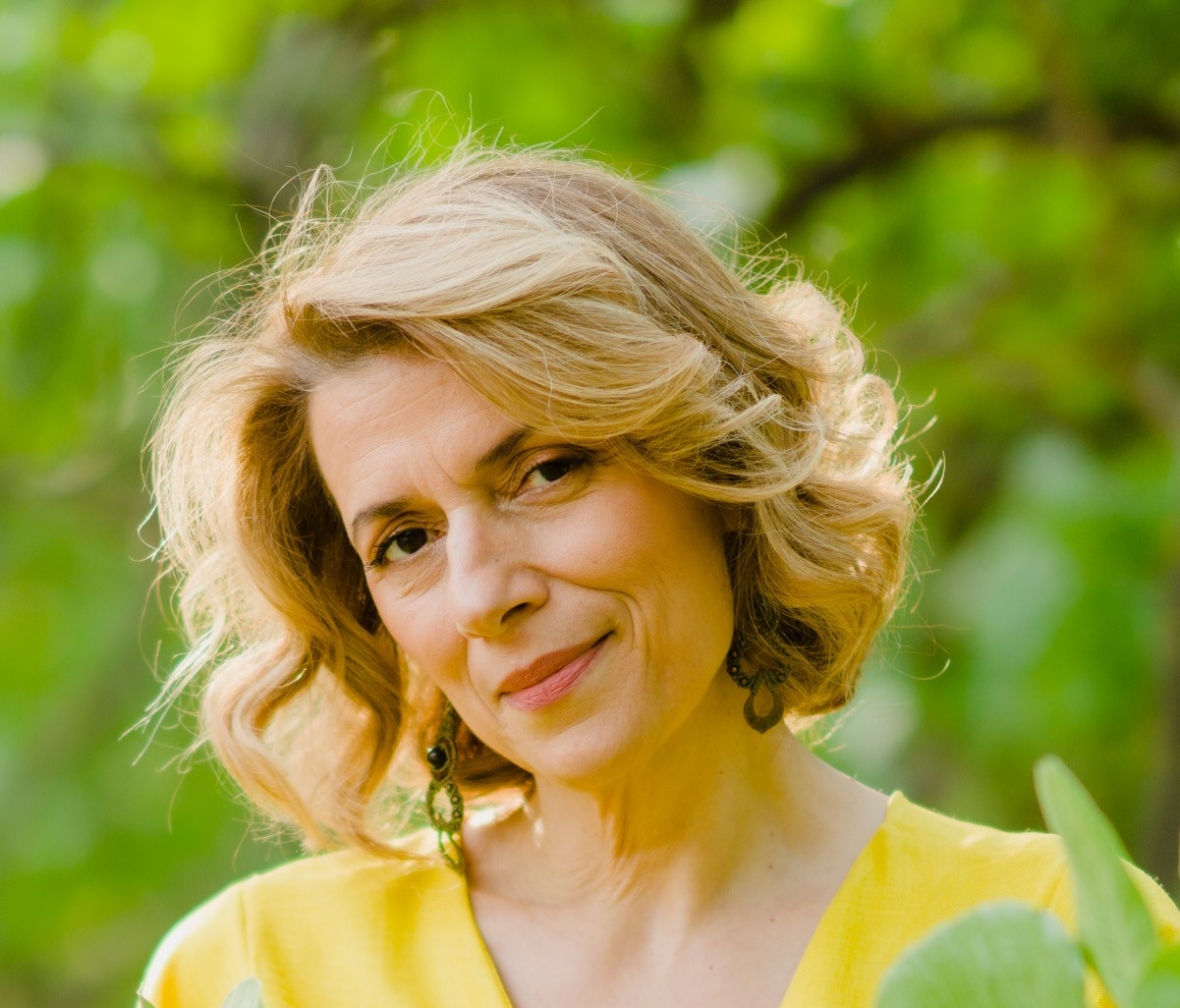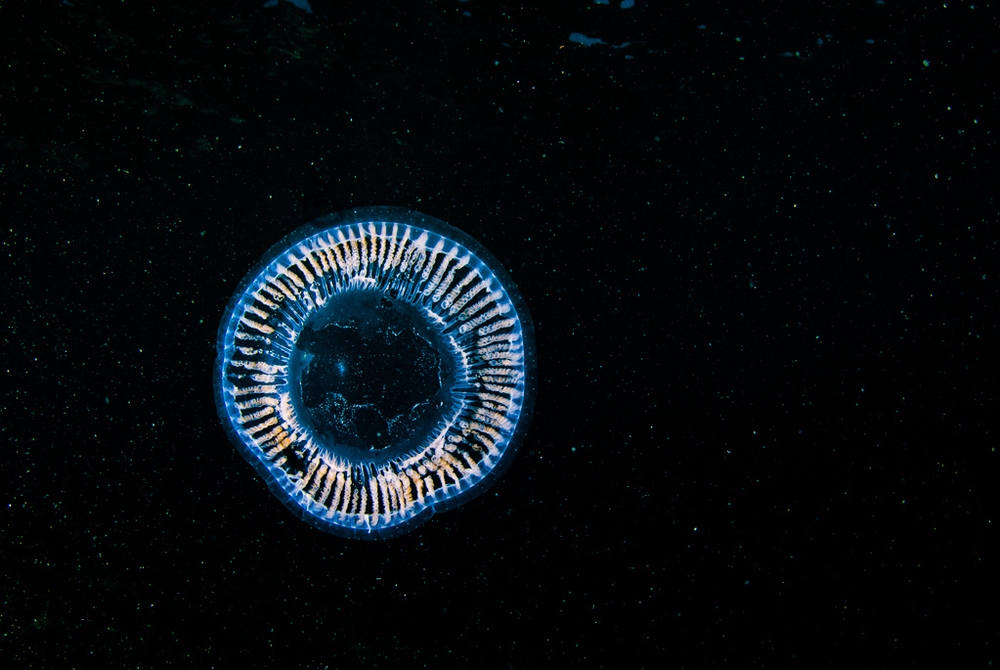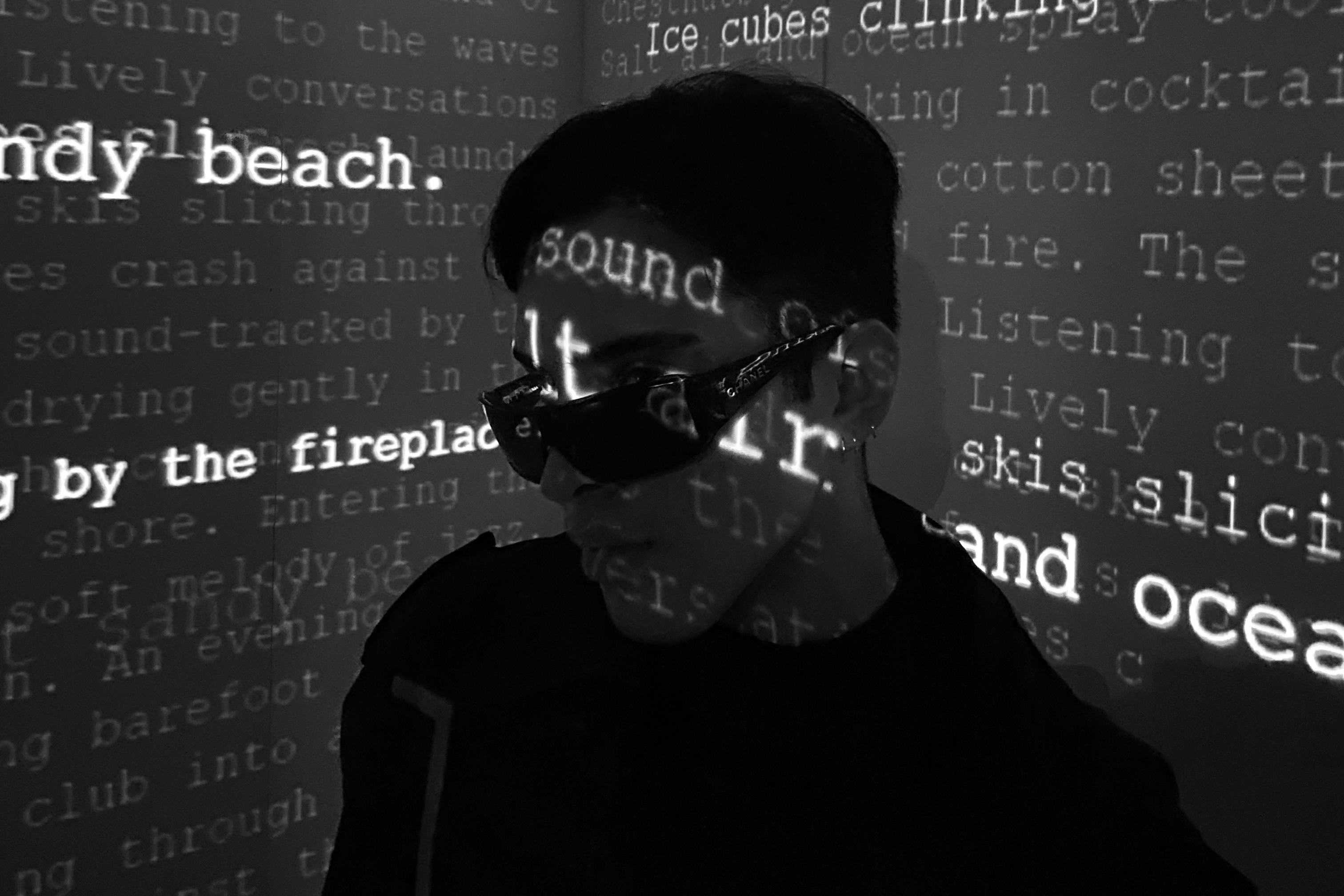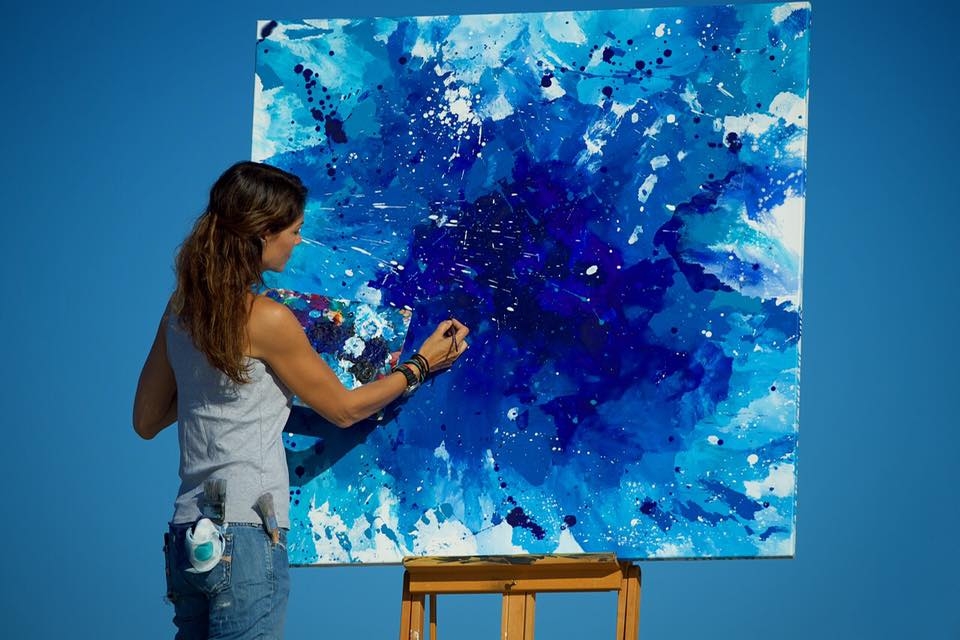An interview about ''Yellow optimism'' or ''Elephant Design''.
How does the design process work?
-Panos: It all starts with a simple idea or inspiration. That is our starting point for each of our projects whether it is architectural, crafting, customizing or other. Sounds easy, right? Well, the truth is that there are a few steps in the procedure that we make before, or even at the same time as we transform our ideas into reality. The most important thing is to define the goals we want to achieve or the gaps we want to fill with each project. These goals can be set exclusively by us or in coordination with our clients. Time and budget are the two crucial axes within which, our planning takes its final form. Lots of brainstorming, research, testing and of course reviewing is what follows. We always try to think out of the box, be spontaneous and experimenting, promote new ideas, but at the same time be as cost and time efficient as possible.
Where do the first clients come from?
-Eleni: The first clients may come from relationships built during your time as an employee or from within the family. No job is too small when you’re starting out. You do a little handiwork for a desirable client, and they know your name when the next big project comes around. Hopefully…The secret to getting noticed is to build your own platform of relationships, connections and resources that will support you. The greatest asset going forward, is your network. All the people you know have their own networks, who also have networks.
-Panos: There are many ways to promote your work nowadays, and the internet offers many alternatives. The best way though is word of mouth. Be honest and reliable and let your work speaks for itself. Satisfied clients will recommend you to new ones. That’s the reason why we provide “after sales” services and try to have as much feedback as possible from our clientele.
When you founded your own firm, what were your goals? Was there something different that you wanted to do?
-Eleni: Until a few months before we started the Elephant Design brand, I had never considered doing it. However, I had always wanted to be a partner in an architectural firm, so I began looking at different paths people took to accomplish this, assessing possible benefits and risks, as well as my own skills and capabilities. Being in this business for 20 years, I believe that the most important part of starting your own design studio is to make sure that you have a great support team behind you. I believe that successful projects are those that achieve the desired results for owners, users and architects and result from strong, professional and personal relationship between all parts.
-Panos: One of our goals is to make our clients to express their true needs and together, give shape to what they have in mind. To be successful we must embrace diversity. Thus, we offer a “full service” package. We cover a vast area of services - from graphic design and visual arts to architecture and urban planning, even counseling when it is needed.
How do you approach a new project with the team?
-Eleni: We believe that architectural design is the result of logic and organization. It is our job to develop spaces which inspire while transferring part of our energy to make people more creative. The most important is the project inception and the preliminary planning. The project’s scope must include several responsibilities, even thought for small scale architectural planning.
-Panos: It is critical to establish the qualities of the project that are necessary to meet end user’s needs and expectations. Value for money in construction requires completing a project on time, within budget and to a level of functionality that meets these determined needs. A well-programmed project will continue to provide value and joy throughout its lifetime.
Our motivating belief is that the built environment has a profound effect on people’s lives, and merits our attention, consideration, and best efforts.
The story behind the name ''Elephant''?
-Eleni: We love elephants as much as we love cats! The imposing presence of the elephant determines the morphology of the whole place where he lives and moves. In their true nature, elephants have the ability to shape and improve the environment in which they live, to open roads to inaccessible forests and to create new spaces. Doesn't that make an architect or creator?
-Panos: The brand name Elephant Design relates to the real and symbolic features of the charming mammal, which relate to wisdom, power, stability and patience. Using the ideas and skills of many different people in order to create new spaces and objects is very important for us. You never forget an elephant!
Which projects are nearest to your heart? Are there any projects you are currently excited to be working on?
-Eleni: It’s really difficult to choose between any of them because each of the projects is completely different from one another. Nevertheless, I would say that my favorite project for 2019 was our own office, because it's the first project we did together as a team and it was a big dream come true since we started discussing it. Though there are more to come! We are working on a very artistic and architectural project for quite some time now. I can't reveal much yet, but it is about the next big idea we want to accomplish, in relation to our office identity as an art studio.
-Panos: Lefteris Yakoumakis’ wall painting in our office made me really happy. A great piece of art by a great artist. I am proud that we were able to convey to Lefteris our vision so that he could capture it in this great 12.00sq mural. And I'm proud that an old and good friend became our partner.
What’s your favorite stage of a project?
-Eleni: As creators, we all go through stages of creativity. Some phases are more severe than others, but getting emotionally involved is, in most cases, unavoidable. I would say I really enjoy the beginning and the end. The schematic design has a great deal of sketching and modeling and is the outline for the entire project. It is the stage where dreams and ideas take shape. But finally, the most important phase is the implementation study and the construction supervising. It is exciting to search, apply and practice with new forms of design materials and methods, to use new technologies and eco-friendly products.
Are you optimistic about the future of your profession?
-Eleni: Norman Foster said that ‘If you weren’t an optimist, it would be impossible to be an architect.’ The rapid technological development provides us with tools that make an architect’s work easier than it used to be in the past. The digital era we live in, demands that everything should and can be done faster, from the developing of the concept to the delivery of the project. I think Greek architects and designers are successfully following the trend of fast architecture.
-Panos: Speaking about Greece, as we come out of a difficult period of a tough economic depression, tourism, as the leader of our heavy industry, offers great opportunities. The need of new constructions as well as renovations has emerged as more and more people invent on their own and/or new properties. Many impressive projects of great aesthetic have been completed or are in progress all over the country and obviously there are many more to come. So, yes, we are very optimistic considering the circumstances. Personally speaking, we as people are very positive by nature and have great faith on what we do as a brand. The design of our office says it all! It is definitely a part of the yellow optimism that characterizes us. And yellow is the brightest color. Every time a designer puts something new into the world, it takes an element of faith.
What is thinking out of the box for you?
-Eleni: Collaborate and teamwork. Architecture and design process require an intersection of science and art, brainstorming and emotional connection between partners. In fact, the Greek word “techne” referred to, “Various kinds of work demanding special skill and knowledge that is intended to produce a specific product”. Two minds are better than one!
-Panos: Thinking out of the box is the process of reinventing yourself. You must always have in mind that anything can be done since you have imagined it. It’s up to you to figure out how.
Does your design approach change when you are working on a piece of furniture, rather than an interior project for example?
-Panos: Not really. Our approach always reflects our passion for what we do, our enthusiasm and our values. We give our all to all we do, and we handle every project with the same respect. That doesn’t mean of course that every project is the same. On the contrary, for us each project is unique, whether it is an architectural one, a customization or a design of an art object from scratch. Its uniqueness is dictated to us by its nature and the key elements that define it – for example the history of a building, the origin of a piece of art, or the sentimental value of an object. We always take under consideration these elements and we make sure that the end result is in accordance with them. At the same time, we try to leave our mark as a brand, our signature if you will, and propose something new without repeating ourselves.

